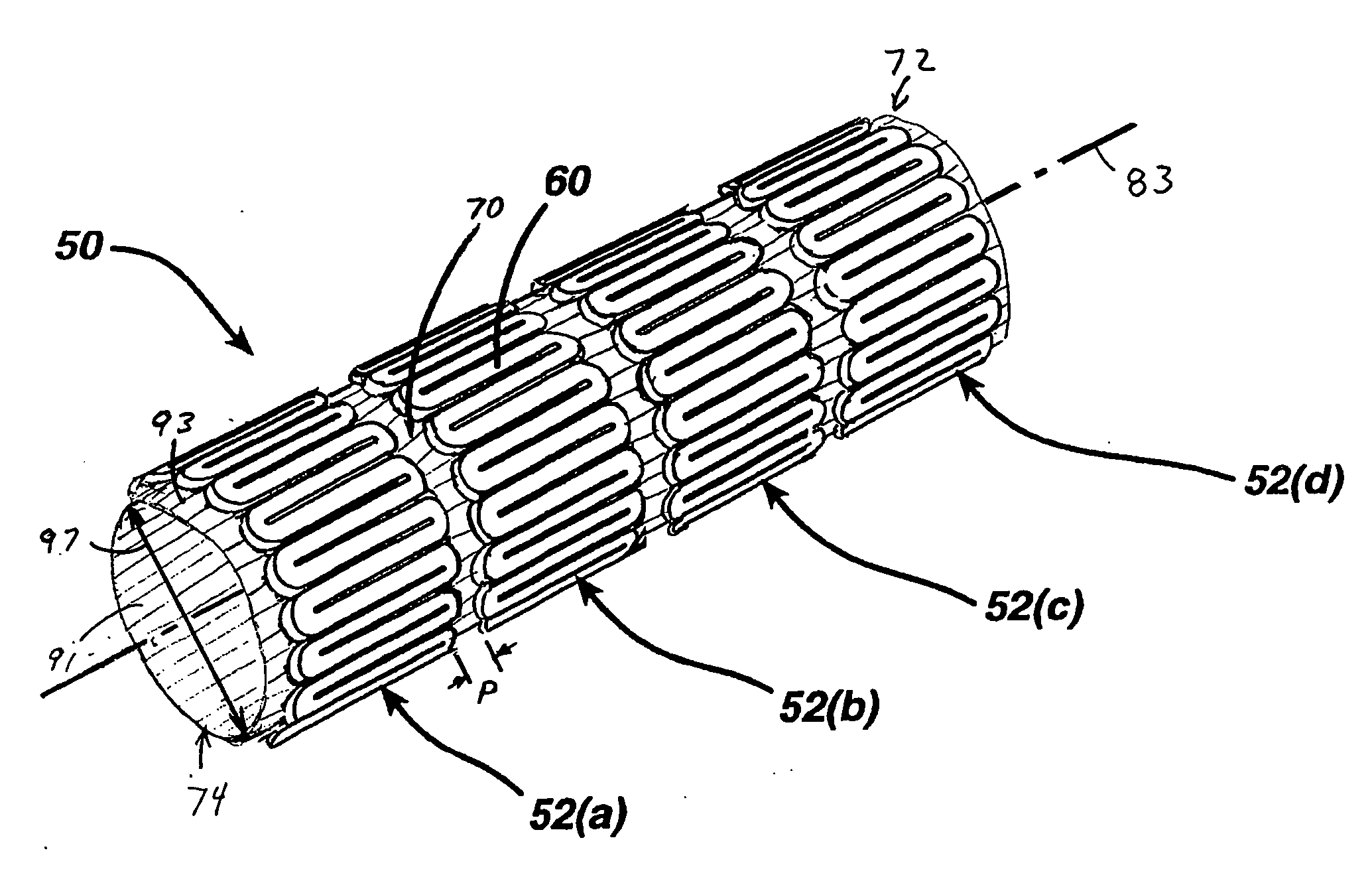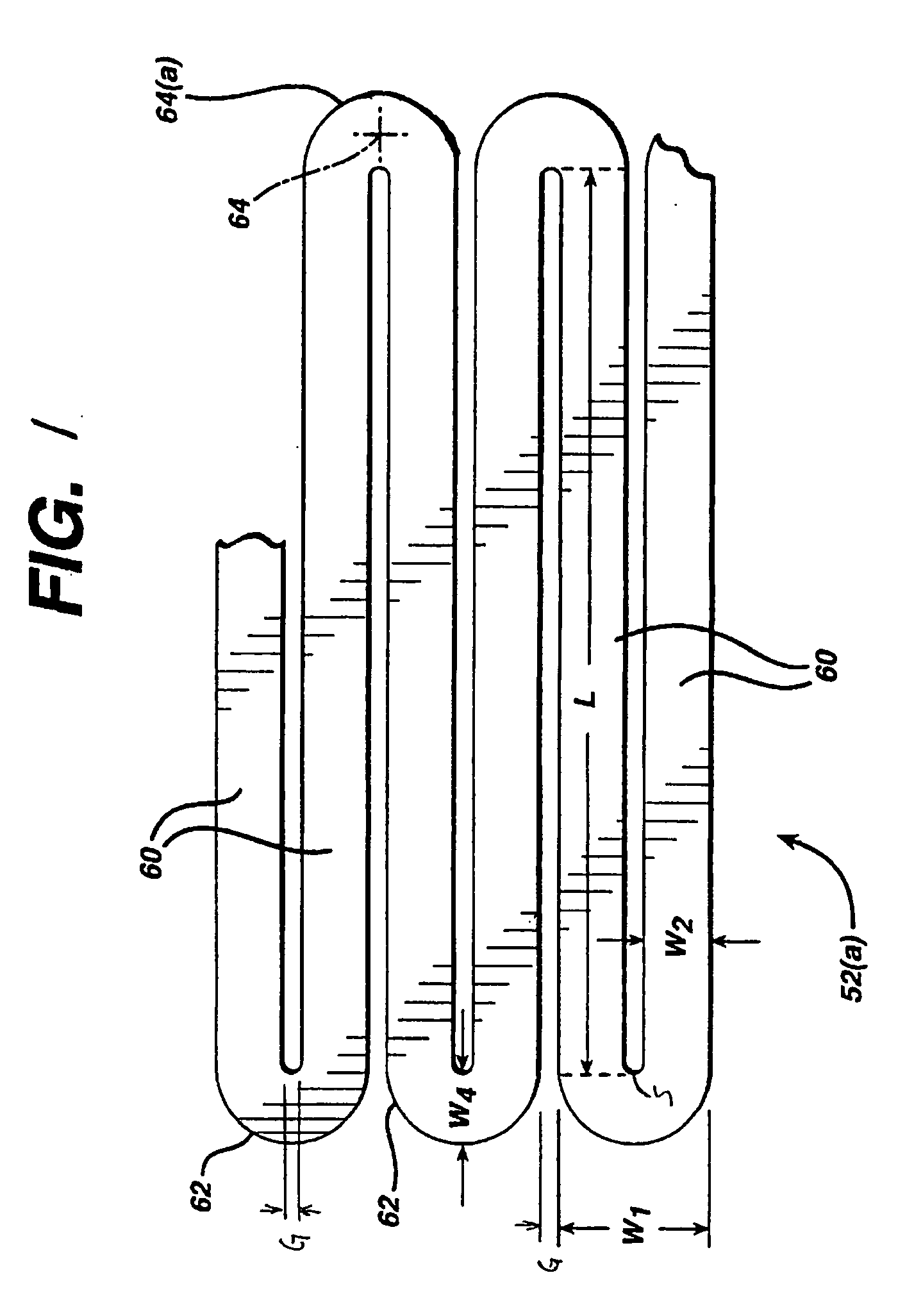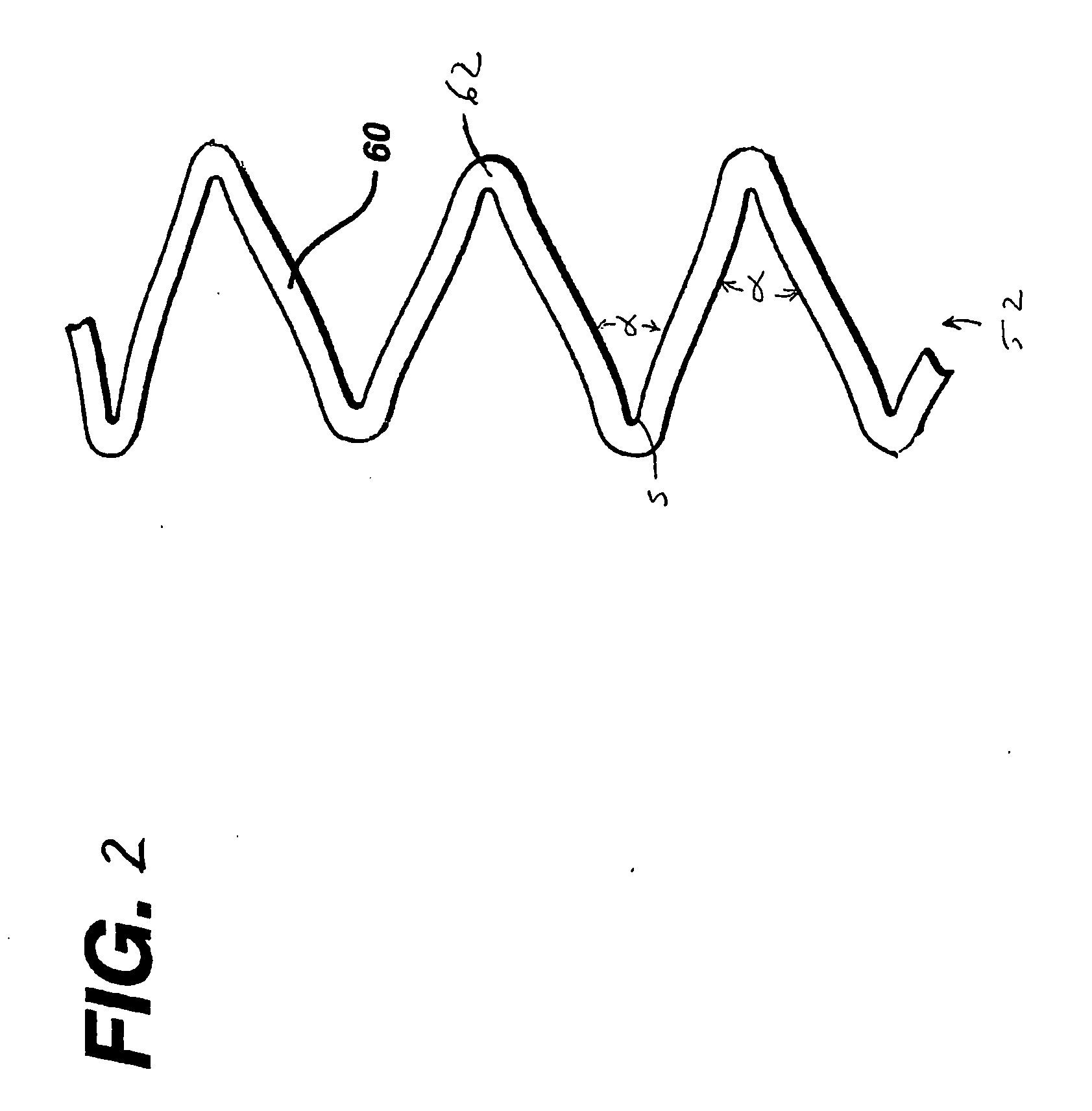Stent segments axially connected by thin film
a thin film and axial connection technology, applied in the field of expandable intraluminal grafts, can solve the problems of prior art stent collapse and functional limitations of prior art stents, and achieve the effects of reducing the risk of stent collaps
- Summary
- Abstract
- Description
- Claims
- Application Information
AI Technical Summary
Benefits of technology
Problems solved by technology
Method used
Image
Examples
first embodiment
[0040]In a first embodiment shown in FIG. 3, all of the hoops 52(a)-52(d) are attached to the outer surface 93 of thin film tube 70. The hoops 52(a)-52(d) are uniform in size and may be welded or adhesively bonded to the outer surface of the thin film tube. The hoops 52(a)-52(d) are equally spaced apart from each other along the length of the thin film tube 70. The spacing P of the hoops 52(a)-52(d) affects the stiffness of the stent 50. The stent 50 will be stiffer if the hoops 52(a)-52(d) are placed very close to each other on the thin film tube, rather than spaced farther apart.
second embodiment
[0041]In a second embodiment shown in FIG. 4, a stent is shown with the hoops 52(a)-52(d) attached to the inner surface 91 of the thin film tube 70. In this embodiment, the hoops 52(a)-52(d) are concealed from view by the thin film tube 70. For clarity, the thin film tube 70 is shown as partially covering hoop 52(d) and completely removed from hoops 52(a)-52(c). The thin film tube 70 provides a smooth outer surface for the stent 50 and may reduce the friction of the stent 50 as it is deployed or retracted through a tubular delivery device.
third embodiment
[0042]In a third embodiment shown in FIG. 5, the hoops 52(a)-52(d) are arranged in an alternating pattern along the length of the thin film tube 70. Hoops 52(a) and 52(c) are attached to the outer surface 93 while the adjacent hoops 52(b) and 52(d) are attached to the inner surface 91 of the thin film tube 70. This alternating pattern of hoops 52 coupled to the inner and outer surfaces of the thin tube 70 may continue along the length of the stent 50. In the compressed state the hoops 52(a) and 52(c) attached to the outer surface 93 of the thin film tube 70 may have a larger diameter than the hoops 52(b) and 52(d) which are attached to the inner surface 91. The thin film tube 70 may have a uniform diameter and thickness along the axial length. In other embodiments, the stent may have an arrangement of hoops that are attached to the inner and outer surfaces of the thin film tube in any pattern. For example, the stent may have pattern that includes one or more adjacent hoops mounted o...
PUM
| Property | Measurement | Unit |
|---|---|---|
| thickness | aaaaa | aaaaa |
| thickness | aaaaa | aaaaa |
| angle | aaaaa | aaaaa |
Abstract
Description
Claims
Application Information
 Login to View More
Login to View More - R&D
- Intellectual Property
- Life Sciences
- Materials
- Tech Scout
- Unparalleled Data Quality
- Higher Quality Content
- 60% Fewer Hallucinations
Browse by: Latest US Patents, China's latest patents, Technical Efficacy Thesaurus, Application Domain, Technology Topic, Popular Technical Reports.
© 2025 PatSnap. All rights reserved.Legal|Privacy policy|Modern Slavery Act Transparency Statement|Sitemap|About US| Contact US: help@patsnap.com



